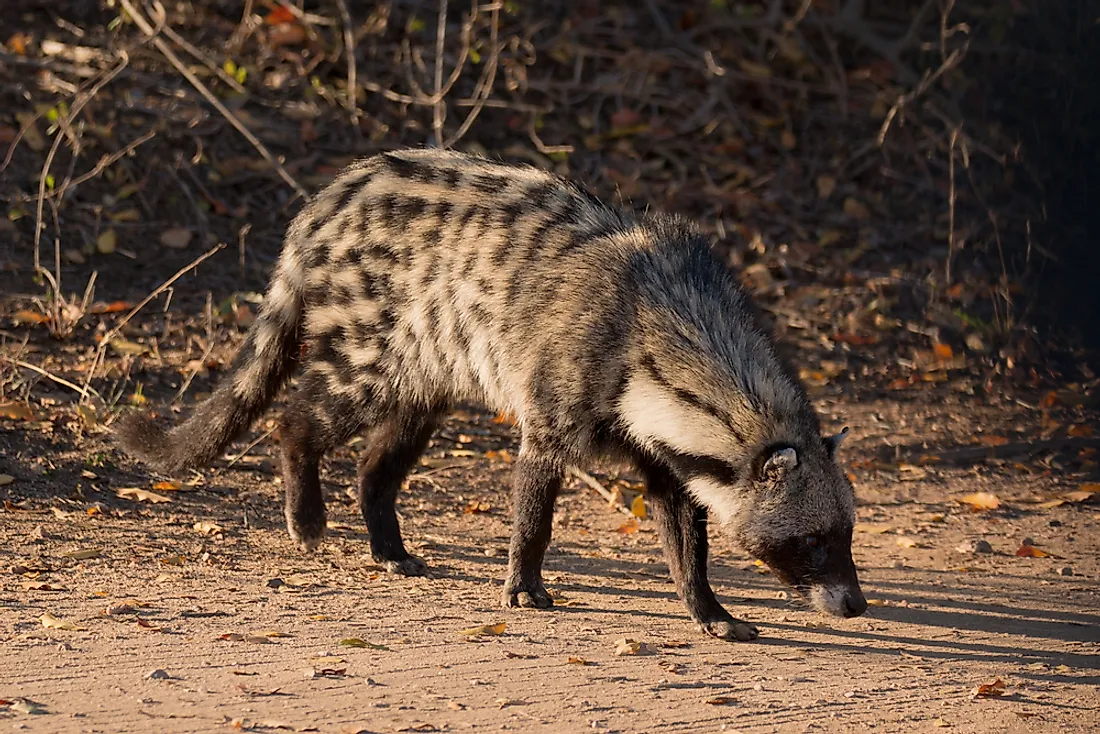What Is a Civet?

What Is a Civet?
A civet is a small, mostly nocturnal mammal also known as toddycats. Civets resemble cats in terms of their lithe bodies, but have a long, pointed muzzle similar to otters. They weigh in between 3 and 10 lbs, which is similar to the average weight of a house cat. Civets are historically known for their musky scent used in perfumes. The musk, also called civet, is a highly valued ingredient in perfumes. The musk is produced by the perineal glands of both male and females civets. The musk used to be harvested by either killing the civet or permanently removing removing the glands. However, given the rise of synthetic musk substitutes in perfumery, the concept of raising civets for harvesting musk has declined significantly.
The Civet Habitat
Various species of civets can be found throughout southeast Asia, the Iberian Peninsula, southern China, and sub-Saharan Africa. The species ranges throughout several biomes including woodlands, savannas, and mountains. Due to climate change, forestry and urban expansion, many species are facing severe loss of habitat. Given this loss of habitat, several species considered are vulnerable, and the otter civet species has been officially declared as endangered. Although certain species of civet are well studied, others remain rare and elusive, hiding within their habitats. The Hose’s civet, which is native to Borneo, is one of the worlds least known carnivores. However, not all civets are secretive. For example, the Asian palm civet is often found venturing into urban areas. Though they are not dangerous to humans, they do raise complaints about feces and disruptive noise on roofs.
Interesting Facts About Civets
The musky scent of civets is not the only reason they are raised for commercial use. Kopi Luwak, also known as Caphe Cut Chon, or fox-dung coffee, is a rare delicacy in Vietnam and the Philippines. Civets are fed coffee cherries, the reddish fruit surrounding a coffee bean, to partially digest and excrete. Civets can digest the flesh of the coffee cherry, but the beans are not digested by the stomach enzymes before being passed through. The beans are harvested from the civet’s excretion, snd them processed and used for coffee. The cost fox-dung coffee is high, ranging from $600 for 1lb to $100 per cup of coffee. The high price of the coffee In addition to the high price of the coffee, the conditions of many civet farms are horrific, with cramped cages and force-fed diets leading to various health concerns. As a result, there are campaigns currently underway to improve the conditions of farming civets in the coffee industry.











